The Dallas Museum of Art has done it again! They are always updating their rotating exhibit space with something fresh and showcasing incredible collections of artwork at a low cost to visitors, and this season is no different. Van Gogh and the Olive Groves is officially on exhibit from now until February 6, 2022.
If you like art history, you’re a fan of Vincent Van Gogh specifically, or even if you just enjoy learning new things, this exhibition is definitely for you. It features dozens of paintings Van Gogh created throughout the last chapter of his life and shares insight into his frame of mind when he was painting. As someone who enjoys art but only has a beginner level knowledge of it, I really enjoyed understanding the significance behind each piece.
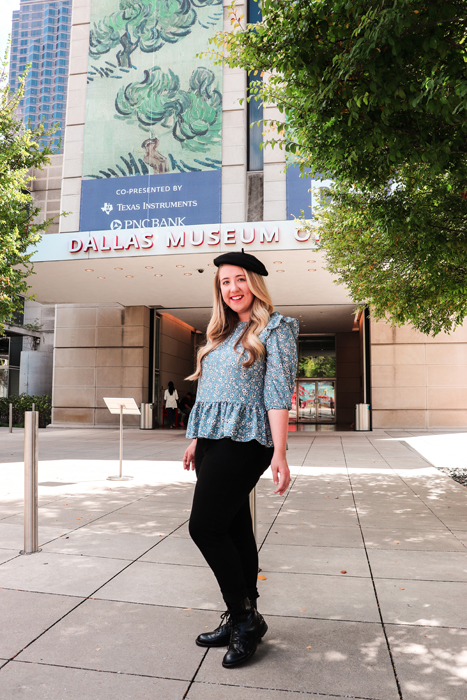
The DMA invited me to tour Van Gogh and the Olive Groves and share highlights from my experience over on Instagram. I had so much fun and learned so much, I decided it warranted a full-length blog post about the experience. Here are my top takeaways from exploring the mind of Vincent Van Gogh.

Background for Van Gogh and the Olive Groves
The first thing to know about this particular collection of Van Gogh paintings is that they were created while he was staying at a mental health asylum for about two years prior to his suicide in 1890. Van Gogh was deeply emotionally connected to his artwork, and his techniques and even subject matter varied depending on the emotions he was experiencing throughout this time. The fact that he suffered from mental health problems and ultimately took his life is an absolute tragedy. His works live on as an embodiment of his spirit and the often unappreciated brilliance he possessed.
Most of the paintings featured in Van Gogh and the Olive Groves are landscapes of the olive trees located out on the grounds of the asylum in Saint-Remy-de-Provence in southern France. Throughout his career, Van Gogh would focus on painting a particular subject throughout different seasons in order to capture its true essence. So his paintings of the olive groves differ dramatically in color when capturing the spring, summer, or fall.
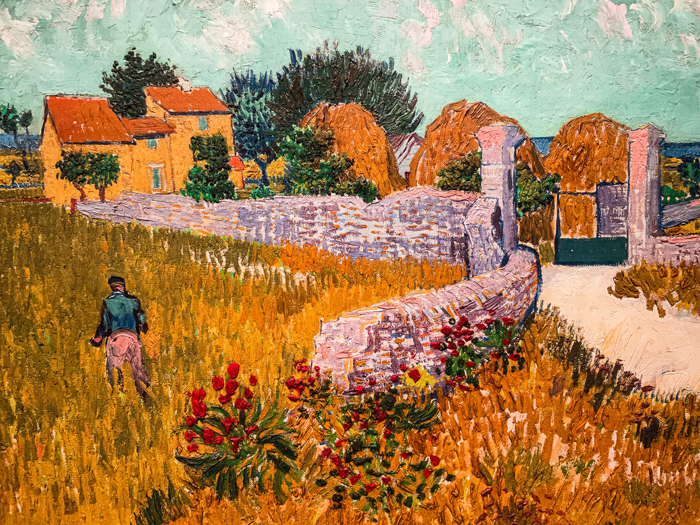
Experiencing the Exhibit
The exhibit is divided up into different sections based on the time periods when Van Gogh created different paintings. They are punctuated by placards with excerpts from his letters to family and colleagues and explanations to the symbolism in his pieces. A man and a woman laboring in a vineyard are actually a nod to the Garden of Eden. Wheat fields evoke reapers, which represent death. The sun rising behind the grove is an allusion to God or Christ. These symbolic explanations were my favorite part of the exhibit, because I felt like I could understand the importance of each landscape scene so much better.
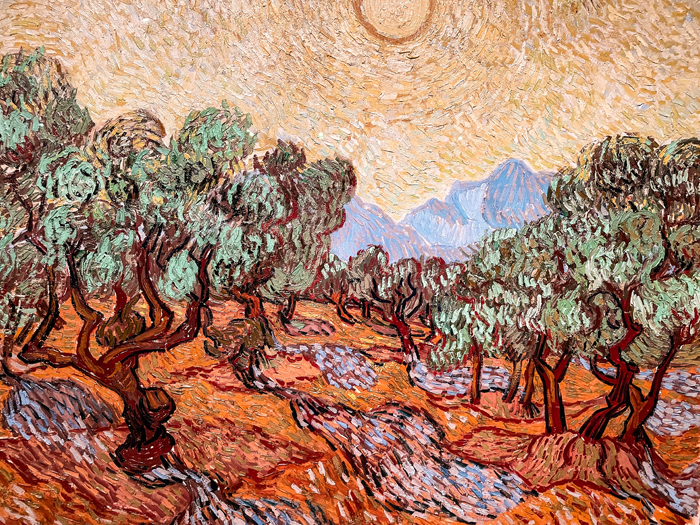


Throughout the excerpts from Van Gogh’s letters, you can also sense his emotional turmoil and self doubt. After suffering a mental breakdown at one point, the lines in his paintings become broader and more chaotic rather than precise. Based on his correspondence with some of his colleagues, Van Gogh’s letters indicate that he felt insecure about his artistic choices and abilities. When he left the French asylum in 1889, he tried to put together an exhibit showcasing the olive grove paintings as a collection based on the success of his famous colleague Claude Monet. His own works were not received with the same positive fervor until after he died.
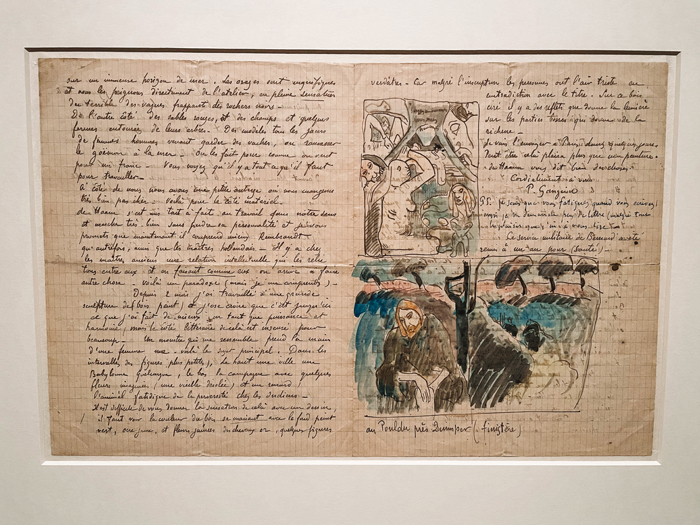
All of this context is what made the exhibit so fascinating to me. Instead of just looking at the paintings and appreciating the pretty colors and swirls, visitors can truly understand their significance.

Takeaways from Van Gogh and the Olive Groves
The final room in the exhibit features some of the very last paintings Van Gogh created before he took his own life in the summer of 1890. During his life, Van Gogh was not commercially successful. But after his suicide, people began to realize how talented he was. It’s heartbreaking to imagine that he felt like a failure when he is considered one of the most brilliant painters throughout history today.

Leaving the exhibit, I reflected a lot on this. And I think there are some things each of us can take away from Van Gogh’s legacy.
Keep doing the things you love, not for the recognition they may bring, but simply because you love them. Comparison is the thief of joy, so don’t create to compete with others. Create from your heart, and you’ll always end up with something beautiful. As a writer, this was a poignant reminder for me.
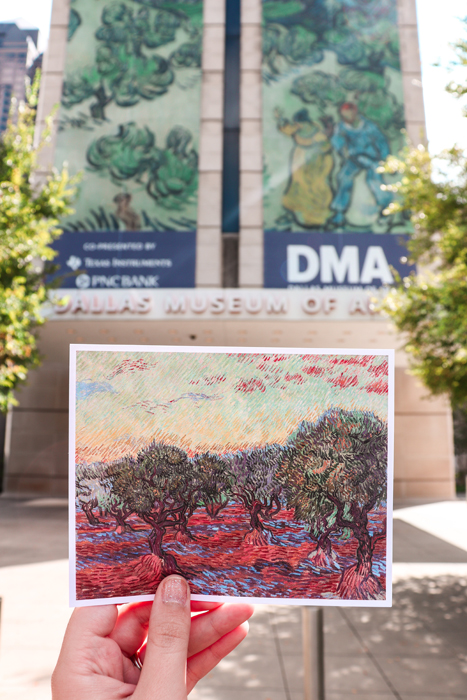
Visiting the Dallas Museum of Art
If you want to experience Van Gogh and the Olive Groves plus dozens of other incredible galleries at the Dallas Museum of Art, reserve tickets in advance on their website. Admission to the main museum is free year-round, but reserving your spot in advance helps with social distancing.
Tickets to Van Gogh and the Olive Groves are $20-25 for adults and free for kids age 11 and under. It takes about one hour to meander through the exhibit if you want to read each placard like we did.
If you’re looking for more fun things to do in Dallas this winter, check out these 10 Christmasy spots. If you’re a Vincent Van Gogh fan, you’ll also love Immersive Van Gogh at Lighthouse Dallas.

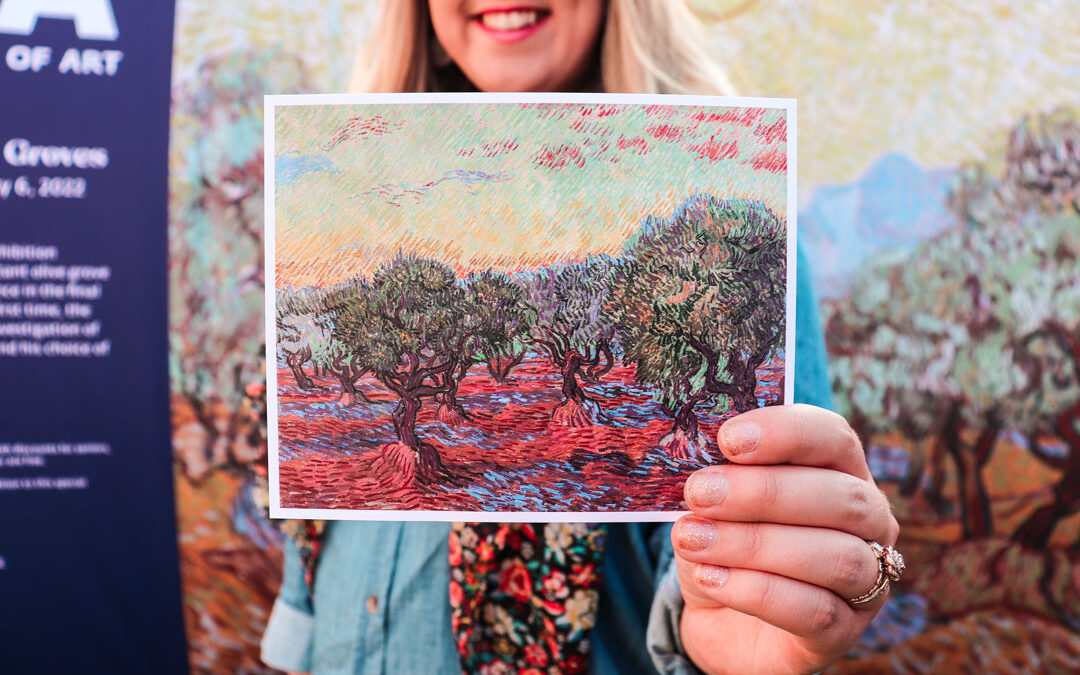

FOLLOW ME